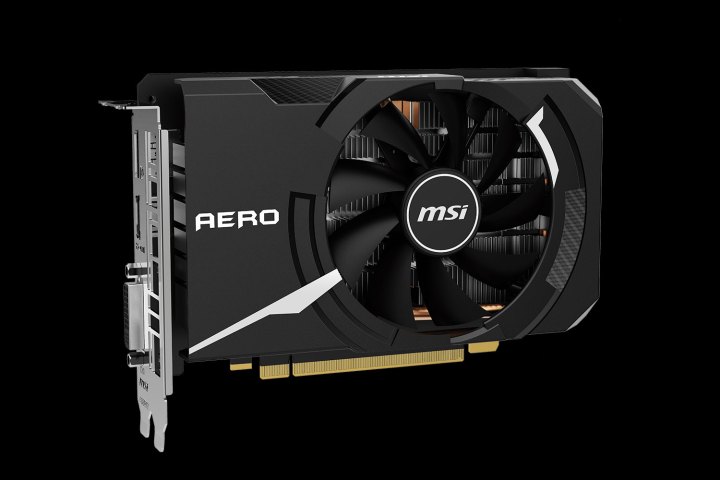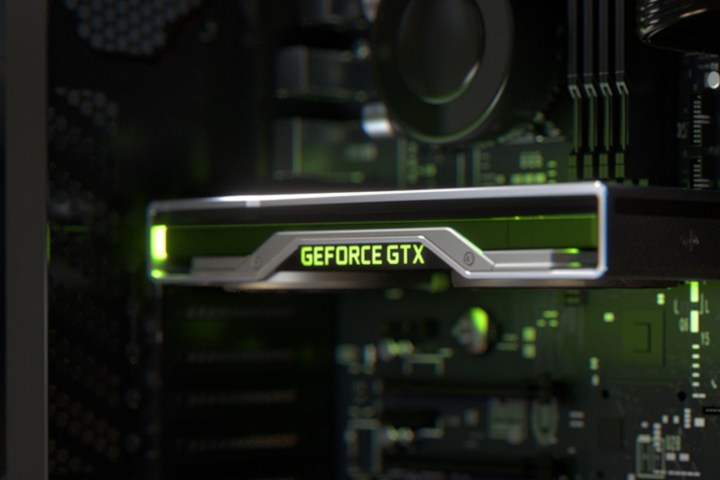Nvidia’s Super refresh of its RTX and GTX series of Turing graphics cards was swift, with the GTX 1650 Super landing just seven months after the standard GTX 1650.
Like other Super cards, the GTX 1650 Super improves on its older sibling in a number of ways. However, as of February 2021, the prices for both cards have shot through the roof, so much so that we wouldn’t consider them “budget” graphics cards at all.
Interested in more than just Nvidia’s budget cards? These are the best GPUs you can buy (when you can find them in stock).
Pricing and availability

The GTX 1650 went on sale in April 2019 with a launch price of $150. As of February 2021, any GTX 1650s you can find in stock are twice as much or more. The cheapest card we could find was an MSI low-profile variant for $300. The card launched in late 2019 for $169.
The GTX 1650 Super debuted on November 22, 2019, with a launch price of $160. There are no Nvidia Founders Editions versions of these cards, so you’re only getting ones from Nvidia board partners. Like the GTX 1650, stock shortages of the Super variant have shot the prices up. The cheapest card we could find was going for $350, up from its $160 launch price.
As of early 2021, the pricing for both cards is terrible. Although Nvidia’s 30-series graphics cards are experiencing stock issues, too, the shortages mainly apply to the RTX 3080. Cards around $350, like the RTX 3060 Ti, are continually being restocked at major retailers. They just fly off the shelf within a matter of minutes.
Unfortunately, there isn’t a suitable replacement for the GTX 1650 or 1650 Super around $150. We wouldn’t recommend paying any more for these cards, especially as stock for the newer cards begins to normalize.
Performance
The GTX 1650 Super might have a similar name to the 1650, but that’s more for marketing than anything else. The 1650 Super is an altogether different GPU. It has substantially more CUDA cores than the 1650, as well as a higher clock speed and 50% faster memory. It’s a big upgrade. On paper, it’s within striking distance of a stock GTX 1660.
| GTX 1660 | GTX 1650 Super | GTX 1650 | |
| GPU | TU116 | TU116 | TU117 |
| CUDA Cores | 1,408 | 1,280 | 896 |
| Base Clock | 1,530MHz | 1,530MHz | 1,485MHz |
| Boost Clock | 1,785MHz | 1,725MHz | 1,665MHz |
| Memory | 6GB GDDR6 | 4GB GDDR6 | 4GB GDDR5 |
| Memory speed | 8Gbps | 12Gbps | 8Gbps |
| Bandwidth | 192GBps | 192GBps | 192GBps |
| TDP | 120w | 100w | 75w |
In developing the 1650 Super, Nvidia gave it GDDR6 memory running at a faster clip than that found in the 1650 or the 1660. That’s what enables it to match the GTX 1660 in memory bandwidth, despite its narrower memory bus. It has a higher base and boost clock, but the biggest differentiating factor is the 42% increase in CUDA core count. That should, when combined with the other performance enhancements, deliver a noticeable improvement in the card’s capabilities.
That seems to play out in testing, too. In games where the standard GTX 1650 performed poorly, the GTX 1650 Super really picked up the slack. In TechPowerUp’s testing in games like Metro Exodus, we see the 1650 Super reach speeds in excess of the RX 580. In the Witcher 3, the 1650 almost catches up with the RX 590, where the standard 1650 falls well behind even the RX 570 and the GTX 1060 3GB.
TechSpot’s results echoed these findings, showing the GTX 1650 Super as an excellent 1080p video card, with no problem hitting a consistent 60 FPS in a number of games. Hardware Unboxed amalgamated 17 of its various game tests into one results graph and found that where the standard 1650 is often noticeably less capable than the 1060 3GB and RX 570, the GTX 1650 Super delivers performance that is within a few FPS of the RX 580.
This makes Nvidia’s budget graphics card line far more competitive, especially since with a little overclocking, you’re likely to be able to reach near-GTX 1660 speeds, saving yourself a lot of money in a tight and competitive price range.
What about ray tracing?
Both the GTX 1650 and GTX 1650 Super technically support ray tracing, thanks to Nvidia’s expansion of the previously-RTX-exclusive feature early in 2019. That said, neither of these cards sports the RT cores that provide hardware acceleration for ray-tracing calculations. We’ve seen previously that only the GTX 1080 Ti really has the general computing grunt to deliver even passable ray tracing experiences without those RT cores, so don’t expect to enjoy
You can turn it on to see what it looks like, but it is almost certainly not going to be playable, regardless of your choice of game.
The upside is that you can still enjoy other Nvidia features like its support for Reshade post-processing effects in the Geforce Experience, and its NULL (Nvidia Ultra Low Latency) enhancement for competitive gaming.
The 1650 Super is the new 1650

With the way prices are right now, there is no point in buying a GTX 1650 or a GTX 1650 Super. Between the two, the GTX 1650 Super is a far better card, but it’s not worth twice its MSRP.
Considering the broad disparity in performance and the incredibly narrow difference in pricing, Nvidia will need to either drop the standard 1650 entirely or, more likely, adjust its pricing downward so it competes more directly with AMD’s ultra-budget cards, like the RX 560.
It’s hard to justify either in 2021, however, especially as games become more demanding and graphics cards more powerful.
Editors' Recommendations
- The war between PC and console is about to heat up again
- Nvidia RTX 50-series graphics cards: news, release date, price, and more
- The sad reality of AMD’s next-gen GPUs comes into view
- 10 best graphics cards of 2024: finding the best GPU for gaming
- What is VSync, and why do you need it?





